Awa-Odori takes place during the Buddhist observance of O-Bon, a festival when the spirits of the dead are thought to return to their ancestral homes. The origin of Awa-Odori dates back to 400 years ago in Tokushima on the island of Shikokuku. ‘Awa’ is the old name for Tokushima, and ‘odori’ means dance. It is believed that the departed souls are welcomed back with a performance of Awa-Odori.

The motto of Awa-Odori, translated into English, is “we’re fools for dancing, and you are a fool for watching, so you might as well dance!” And people take that to heart. There are official dance stages where the dancing is organized and orderly, but it is just as common to see groups – known as ‘ren’ – breaking out into dance in the middle of the streets and pull people in to dance with them.
A typical ‘ren’ has five components: a guy at the head of the group carrying a long pole decorated with paper lanterns bearing the name of the team;
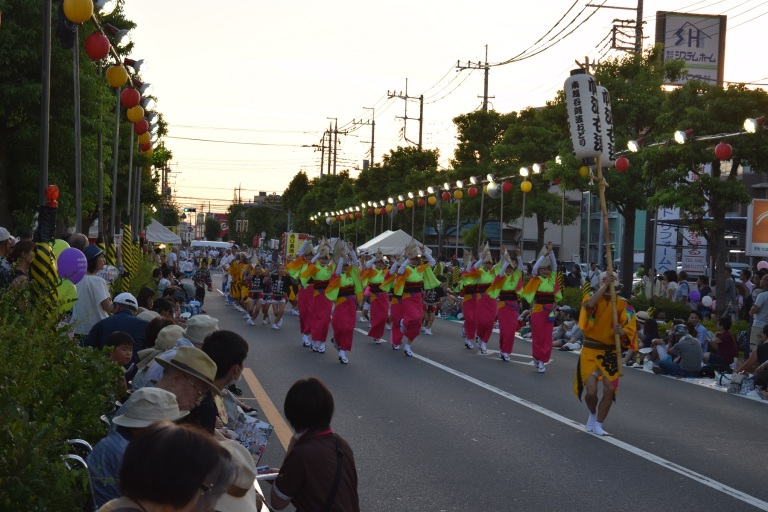
the children, who range in age from a young as 3-4, up to about 12-13;
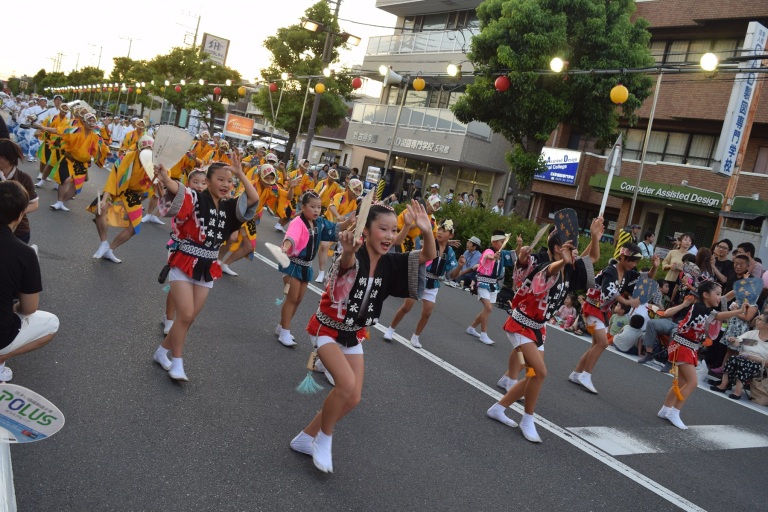
the women, dressed in light-weight ‘yukata’ kimonos, wooden ‘getta’, or Japanese sandals, and ‘Amigasa’ straw hats (traditionally worn by women when working in the fields);
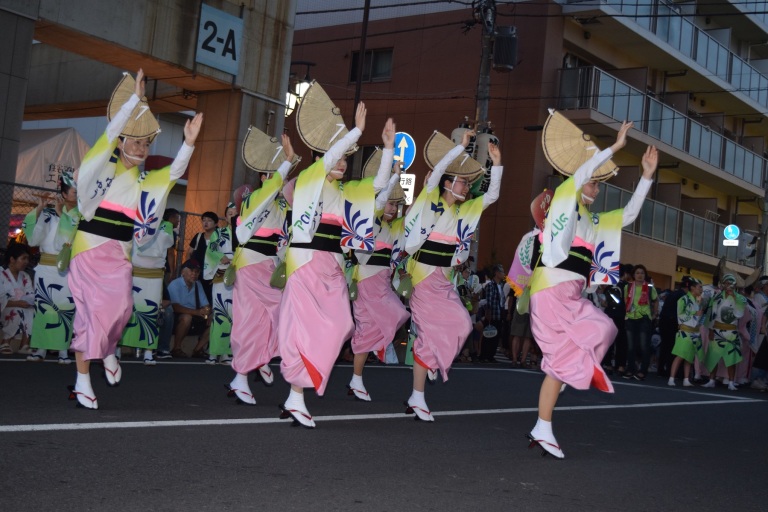
the men, who wear happi (shorter yukata over shorts or pants) and tabi (split-toed, rubber-soled socks). They are also recognisable by tying the hankies on their heads under their noses.
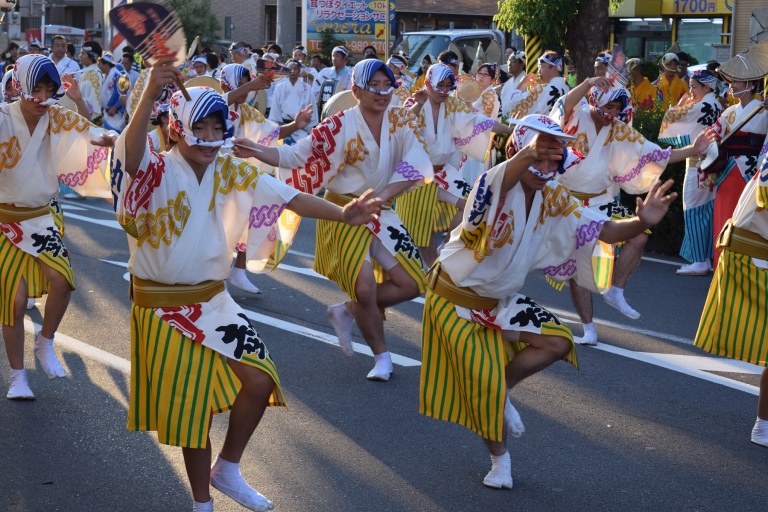
Finally, come the musicians, with ‘shamisen’ (Japanese 3-string lute), flutes, drums of various sizes, and perhaps the most important as it sets the beat, the ‘kanne’, or hand-held metal gong.
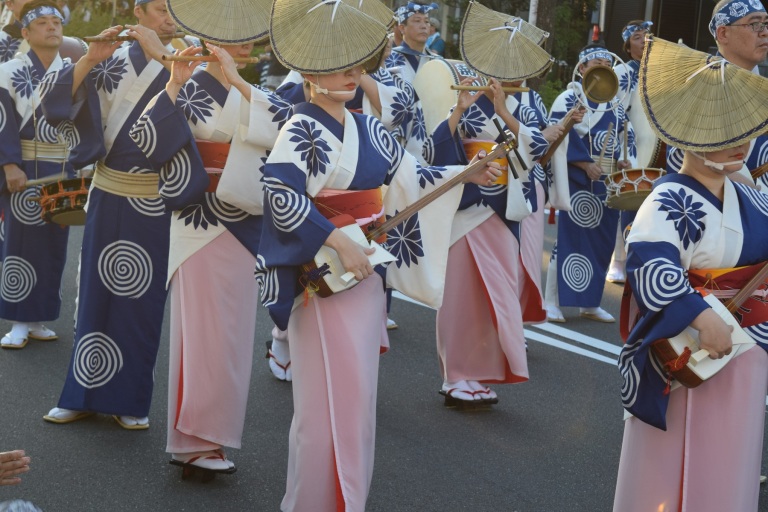
The ren parades down the street singing “odoru aho ni miru aho; onaji aho nara odoranya son son!” (it’s a fool who dances and a fool who watches; if both are fools, you might as well dance!). The Awa-odori differs from other forms of street ‘Obon dori’ in that most dances are usually performed in a circle, but Awa-Odori participants march in a straight line.
There are two forms of dance performed within Awa-Odori – the men’s dance called otoko-odori and the women’s dance known as onna-odori.
While onna-odori dancers stand tall and elegantly for their dance, otoko-odori is wilder, with dancers bending their knees and keeping their bodies low to the ground.
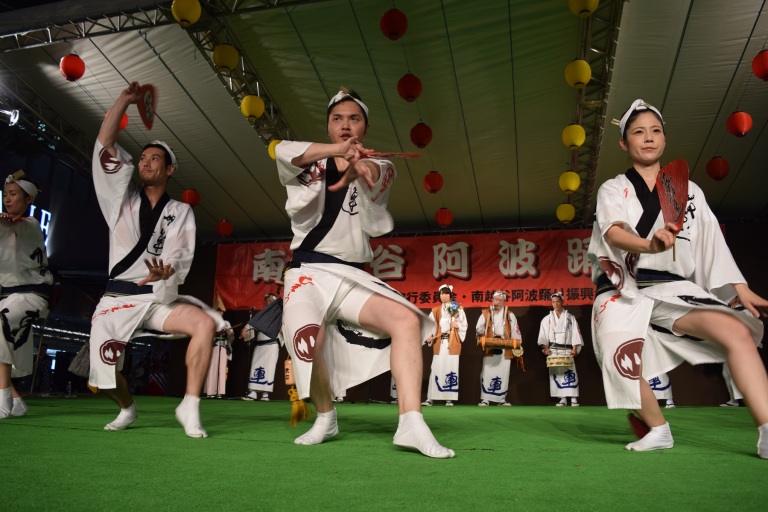
One rule you have to observe is to keep your hands and arms above your shoulder while dancing. This is quite unusual, since most dancing styles in Japan emphasize downward motion. Awa-Odori is upward oriented instead.
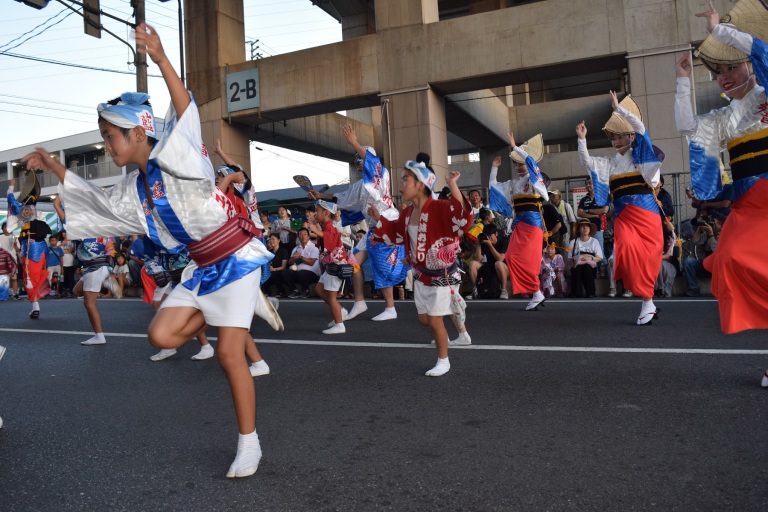
While dancers make it look so easy, both are extraordinarily difficult and physically demanding. To get an idea of how hard some of the moves in the onna-odori are, just try leaning forward tiptoed on one bend leg, with your arms held straight in the air and see how long you can hold the pose for – if at all!
Th Awa-Odori held in Minami-Koshigaya (about 20 minutes by train from my home) is considered one of the big three, boasting some 90 or so ‘ren’ and attracting around 800,000 spectators. Mind you, that is small compared with the 190 teams that perform at the Koenji Awa-Odori in Tokyo, or the Tokushima Awa-Odori that attracts over 1.5m spectators!
While the main event is the huge parade when all the ‘ren’ dance down the high street, that, quite frankly, is the boring part – the real fun is when they then go off into different venues around town and perform their individual and unique routines that they have spent the last year perfecting – that’s when you see just how amazing Awa-Odori dancing really is!
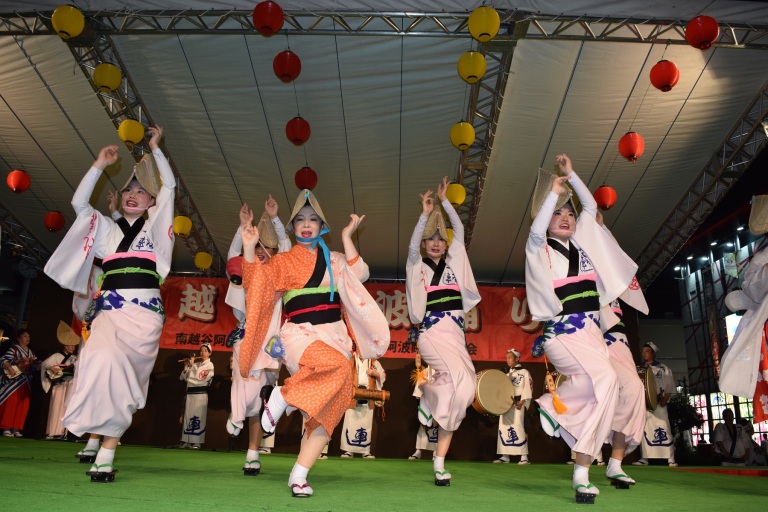
This is a really nice video of what the Awa Odori sounds and feels like:
Amazing!!!
Thank you for sharing your adventures with us!!
I so wish that we could be having these adventures with you….
Love and hugs
Kerry and Rod xxx
On Sun, Aug 26, 2018 at 11:45 PM, myjapantravels wrote:
> tokyophoto1 posted: “Awa-Odori takes place during the Buddhist observance > of O-Bon, a festival when the spirits of the dead are thought to return to > their ancestral homes. The origin of Awa-Odori dates back to 400 years ago > in Tokushima on the island of Shikokuku. ‘Awa’ is th” >
LikeLike